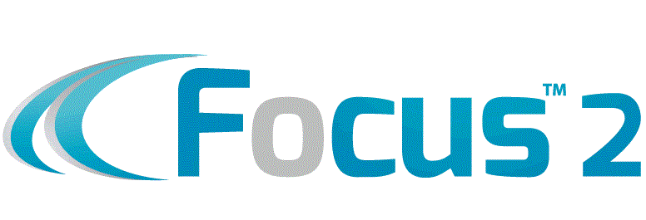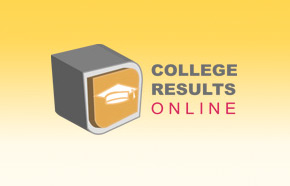Unintended Consequences of a Private Scholarship
Don't pan for gold in the wrong place!
Before you and your student spend time and energy searching for that all powerful, all encompassing Private Scholarship, the FIRST thing you must do is find out what the college will do with the Private Scholarship funds.
Will the college use the Private Scholarships to reduce the loans offered to the student, or will the college reduce the Grants and School Endowment Scholarships keeping the parent’s cost the same?
The National Scholarship Providers Association (NSPA) sponsored a Private Scholarship Count that was published in 2005. The publication states (the) “Total private scholarship aid was between $3.1 billion and $3.3 billion in 2003-2004.” NSPA link http://www.scholarshipproviders.org/Documents/PrivateScholCount.pdf
While this number seems impressive, the publication then further states that "Approximately 7 percent of undergraduate students received private scholarships, with an average value of $1,982."
Two grand, $2,000 is way short of the cost of attendance even at a community college. Arizona State University’s Cost of Attendance for one year now tops $25,600 for in state students. There is little impact that the average $1,982 private scholarship would have at ASU in the grand scheme of things. As an example, from ASU’s endowments the in state Presidential Scholarship is $9,500. This is a bigger impact on the parent’s Net Cost.
There is more money and bigger scholarships granted from the college’s endowment funds to students that the college wants to entice the student to attend their college thereby reducing the cost of the college to not only the student but also the parent.
I have said it a hundred times and will say it a thousand more… the Best Scholarships and the Biggest Scholarships are scholarships given to the student through the college. This is achieved through Student Positioning and properly marketing the student to the right college.
See this article. http://swarthmorephoenix.com/2014/10/23/financial-aid/
Colleges absorb outside scholarships, parent contribution unchanged
By Daniel Banko on October 23, 2014
Three weeks ago, the Phoenix published an op-ed by Casey Simon-Plumb ’18 about Swarthmore’s financial aid policy. In her piece, Simon-Plumb wrote about her disappointment after discovering that outside scholarship awards are partially surrendered to the college as part of their financial aid package. She asked, “Why is my hard-earned scholarship money being absorbed into a mysterious fund and being allocated towards who knows what? The formal language in financial aid brochures only tell a person so much.”
According to the school’s financial aid brochure, since financial aid packages hypothetically meet a student’s demonstrated need, “any additional outside aid must replace a portion of our award to you.” It means that students at Swarthmore cannot apply their outside grant towards reducing Estimated Family Contribution, only to reducing student loans and work study.
Simon-Plumb was critical of this policy.
“Read the fine print. The first $500 of outside aid was all mine, along with 50 percent of the remaining outside scholarship amount … [That 50 percent] ‘replaces Swarthmore scholarship’ — the grant aid I was receiving — leaving the dollar total my family had to pay relatively the same.”
When asked for comments on the article via email, Laura Talbot, director of financial aid, refused to comment on the matter.
Other members of the Financial Aid office would not comment. As it stands, current financial aid policies offer little economic incentive for outside aid. Using outside aid to reduce student loans and work study is beneficial, but given the fact that the EFC is most often a student’s greatest source of debt, this policy means that outside scholarships are not as helpful as they could be.
When reached for comment, Gregory Brown, vice president for finance and administration, defended the policy.
“The college’s longstanding policy, which is consistent with our peer institutions in accordance with federal regulations, does not permit us to count outside awards as parental contributions. Doing so would be inappropriate since the student, not the parents, received the award, so the award is not part of the parents’ reported taxable income,” he wrote in an email.
Brown also mentioned Talbot’s upcoming retirement and the current search for a new director of financial aid.
“I hope that students will continue to share their experiences with us so that we can continually improve our service to students and their families. In particular, I would welcome student feedback and suggestions about the qualities that we should look for in our next director of financial aid,” he wrote.
At Amherst, Pomona, Williams, Brown, Duke, and Stanford, the financial aid policy regarding outside aid is the same as at Swarthmore. Outside aid cannot be used to reduce a student’s EFC.
Dartmouth college’s financial aid website states, “If the outside scholarship is greater than the self-help level, the family responsibility can be reduced to the federal level.” While it seems EFC for students at Dartmouth can be reduced by outside aid, the key phrase is “reduced to the federal level.” Outside aid can only reduce a family’s expected contribution at Dartmouth to the amount on the FAFSA form, which is often the same or closely related to the EFC that colleges calculate anyway.
In fact, the reason for this similarity between colleges regarding financial aid policy is due to a government mandate set by the Department of Education and outlined in their Federal Student Aid Handbook. Chapter three of the Handbook discusses the steps that college financial aid officers should take in the case of “overawards,” meaning when the total sum of a student’s aid exceeds his need.
When this happens, the handbook states that a college financial aid office only has one option: adjust the financial aid package awarded to the student, but do not adjust their EFC. In all circumstances, outside aid cannot be used to lower a student’s EFC.
Although the policy regarding outside aid is not unique to Swarthmore, students are often unaware when they head to college for the first time that their EFC, as shown on their financial aid package, is a fixed annual number that cannot be reduced by anything short of a dramatic decrease in family income. Outside scholarships they received in high school can do nothing to help alleviate a family’s financial burden of affording college.
So, J.D., what do we do?
You must learn how to Play the College Game, craft a great college candidate and resume, identify the right colleges for your student, properly sell/market/advertise your student to the college. We can help with this process. There is a college for Any Type of student. We can help you get into college and get the best scholarship package that you can.
The Truth Is Out There.
Please tell your friends about AZCollegePlanning.com and the free workshops that are coming up or call us today.






